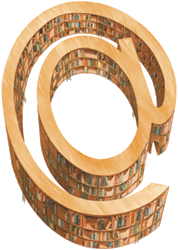Evolution of the SBN Index
The Evolution proiect of the SBN Index was brought about by the indications provided by the National Coordination Committee which, on the basis of the indications produced by the feasibility study carried out by the ETNOTEAM society , pinpointed the need to make the Index a true infrastructure for national bibliographic services.
The main goals of the project were as follows:
- technological upgrading of both basic and application hardware and software, with a change from IBM-MVS to the UNIX/AIX platform, use of the TCP/IP transmission protocol and market standard middleware, object oriented programming, use of XML, adoption of the UNICODE standard;
- rationalization, integration and restructuring of the existing databases (modern, ancient, and music), which at present are still separated and therefore contain information duplicated in various archives; addition of new fields to make the management of new material (graphic, audiovisual, electronic data) possible, and provision of new services to libraries by integrating support archives, such as authority files, in the single database;
- opening the SBN Index to non-SBN library management systems that apply the most widespread bibliographic formats (UNIMARC, MARC21), through the creation of a standard dialogue interface allowing software developers to provide other dialogue applications with the Index, thus broadening the influence and distribution of the services provided by the central system to its users;
- management of different cooperation levels: each hub will be able to choose its own participation level in SBN (record capture only, location of their own holdings, addition of new cataloguing items, corrections);
- development of new functions, such as derived cataloguing (possibility of importing bibliographic data from other databases) and import of bibliographic records (dumping in the Index of formerly built up bibliographic archives, with comparison of data);
- development of management and monitoring functions, both for system performances and for the augmenting of the databases, which will be directly available to users, including also peripheral users; developmentof tools for intercepting duplicates.
From an organizational and operational point of view, the goal was to maintain coexistence between the SBN protocol (in use since 1992) and the new SBNMARC protocol, so as to allow hubs to continue working with the used applications that interact with the Index through the SBN protocol without modifying them, and to be free to decide the best moment to switch to a new hub application that better exploits the new functions provided by the SBNMARC protocol.
Following up on the evolution of the SBN Index, the Institute created the SbnWeb Hub application, by evolving the previous SBN UNIX into a client/server application and adapting it to the new SBNMARC protocol.
For more information: Elisabetta Castro
